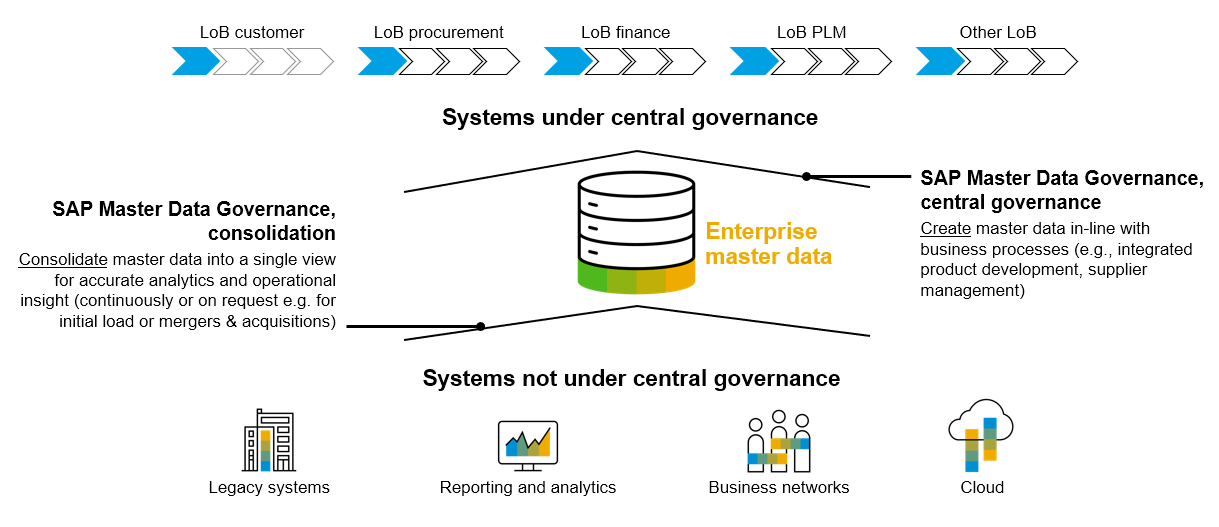Data quality management ensures that your data is accurate, consistent, and up-to-date. It’s critical to information management and can help cut unnecessary costs.
A few SAP solutions support quality data for different business functions. They include SAP S/4HANA Cloud for group reporting, SAP Master Data Governance, and SAP Data Quality Management.
Address Validation
Address validation is a vital component of SAP data quality management. It helps verify addresses for risk assessment and customer master record creation.
It also ensures that data is accurate at the point of entry. By providing that addresses are entered correctly, companies can reduce the number of delivery failures and increase customer satisfaction.
Despite the best efforts of business users, many address records contain inaccurate information. These can include typos or misspellings, missing fields or data elements, and improper formatting.
The address validation API separates an address into its components, identifies the correct components, and checks them for validity. It also standardizes and infers missing components and supplements them with additional information, including geocode address precision and postal services data.
Using reference data from global postal authorities for 240+ countries and territories, this service corrects, parses, standardizes, validates, and enhances address data. The solution also helps cross-reference CRM, USPS, and other databases to build complete individual customer and household profiles.
It enables data quality checks at all lifecycle stages, from when an address is created in SAP until its adoption for business partners. In addition, it is a valuable tool for identifying and eliminating unauthorized addresses. The result is improved sales process efficiency, fewer returns, fewer chargebacks, and higher customer retention.
Reference Data
Whether it’s customer status, product classifications, or other data that ties together multiple systems across an organization, reference data is a crucial subset of master data. Reference data quality significantly impacts revenue, operational costs, reporting, and governance.
Managing reference data is vital for effective data integration, consolidation, and analytics. With it, the entire organization can rely on accurate and complete data that can be costly and time-consuming to correct.
Reference data is often defined and managed differently across the organization, leading to problems like inconsistent or outdated data, misclassifications, and even outright errors. By centralizing reference data management in an MDM hub, organizations can reduce the storage costs of various source systems and speed up the update process.
Another critical benefit of reference data management is that it can help ensure that business intelligence (BI) reports are accurate and trustworthy for business users to use in their decision-making processes. Organizations can significantly reduce the risk of poor data quality by controlling reference data and auditing changes.
It is essential to understand what reference data is, how it differs from other data types, and why it is necessary to manage it properly. Understanding these facts can help your team create a more effective data management system and store helpful information.
Data Cleansing
Data cleaning identifies and corrects errors, missing or irrelevant data, duplicates, or other issues in a raw data set. As a result, it helps organizations achieve data quality levels that improve insights, predictions, and business decisions.
Data cleansing can involve fixing many structural errors, such as misspellings and other typographical mistakes, wrong numerical entries, syntax errors, missing values, and removing outdated or irrelevant data. It can also address the inconsistencies caused by data entry errors and different formats, structures, and terminology used in separate systems within an organization.
Data should be inspected and verified during the cleansing process to meet internal data quality standards. This inspection should include a data quality checklist and metrics to measure the number of data issues found, corrected, and resolved.
In addition, data should be consistent with similar data sets in the system. It can be done by using a data integrity analysis to uncover possible errors or by creating rules that define how the data should be structured, formatted, and used.
In addition, it is essential to have a culture of data quality throughout an organization. This culture can be fostered through simple, repeatable, scalable practices, processes, and working methods aligning with an organization’s goals.
Information Governance
Information governance is a holistic approach that involves processes, roles, controls, and metrics to help organizations treat their data as a valuable business asset. It allows organizations to mitigate cyber risks, ensure data availability, and control costs.
Many companies think of information governance as a legal requirement. Still, it is also a strategic discipline that can enhance how organizations use information, ensuring compliance with regulatory standards and protecting sensitive data. In addition, IG has become a vital component of digital transformation and is an ongoing process that must be adapted to new business technology landscapes.
In addition, IG can improve communication and collaboration throughout the enterprise, helping to make better business decisions with accurate, up-to-date information. Effective information governance can reduce the risks and costs of managing information in a fast-changing environment.
Embedded into SAP Master Data Governance, data quality management can facilitate executing information governance initiatives, enforcing data quality standards with data validation, and measuring the improvement of your organization’s data quality process.
As you implement your data governance framework, consider including the considerations for data integrity in all procedures and implementing audits and quality checks to verify that compliance. These requirements will add extra time and attention to your processes, but they’ll be worth the effort in the long run.











